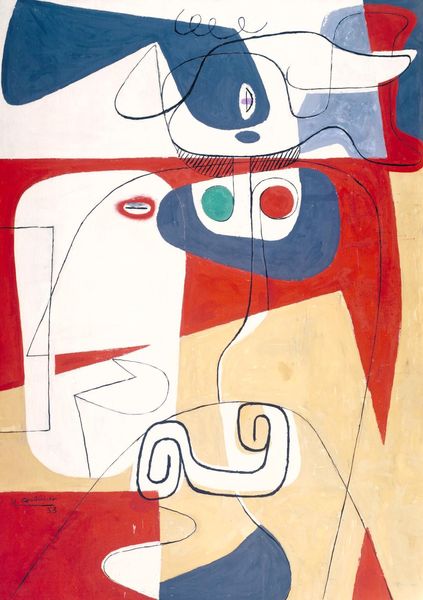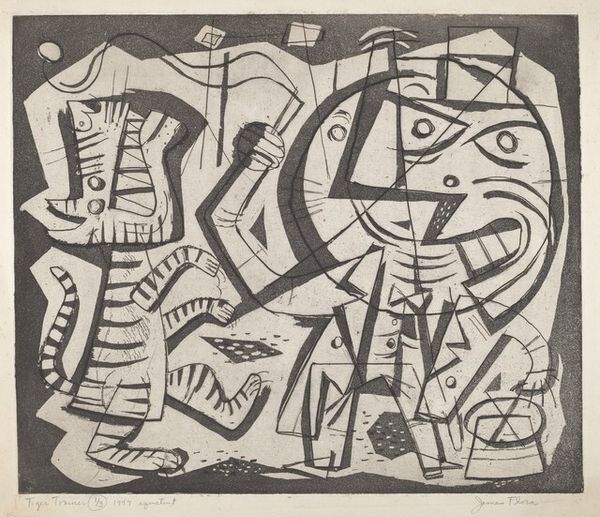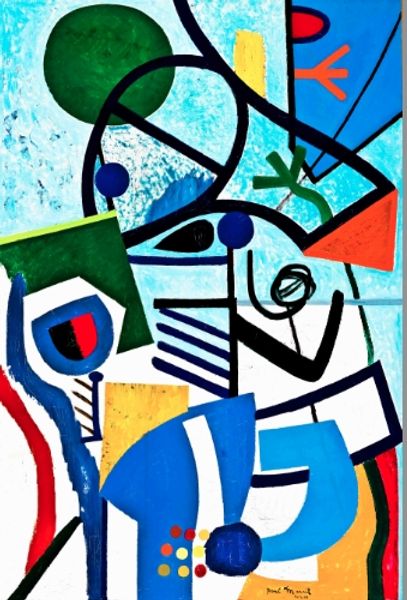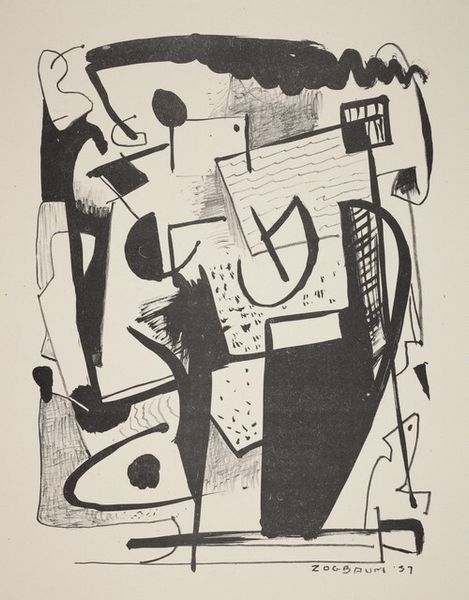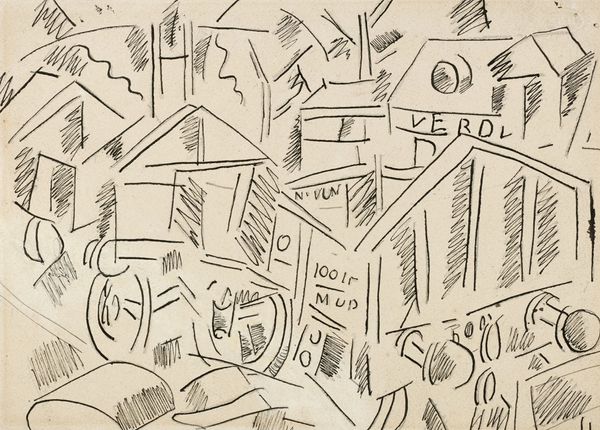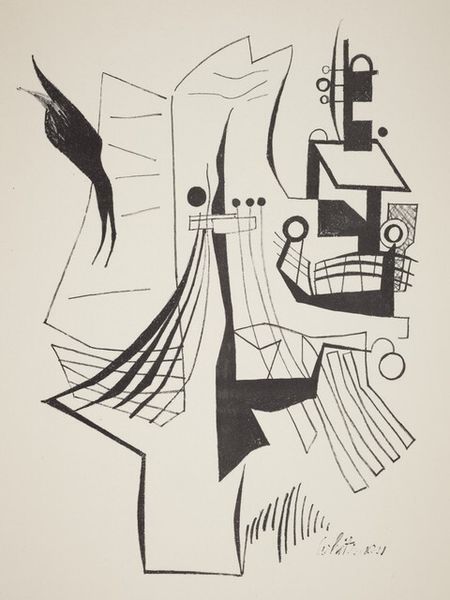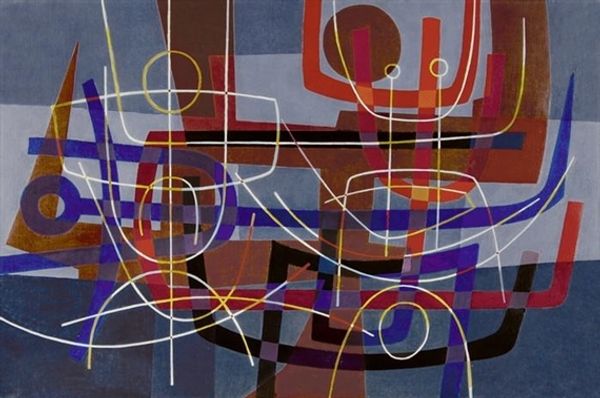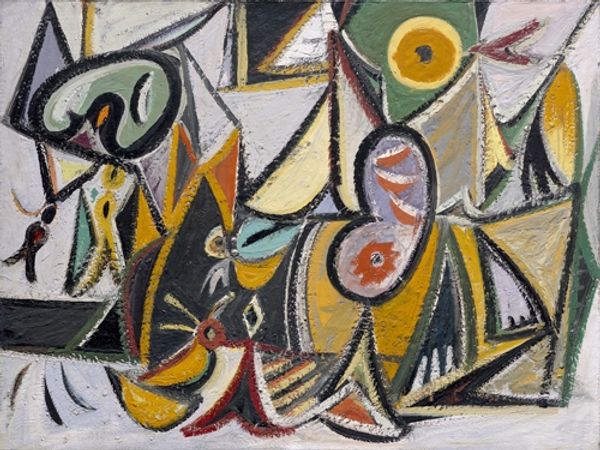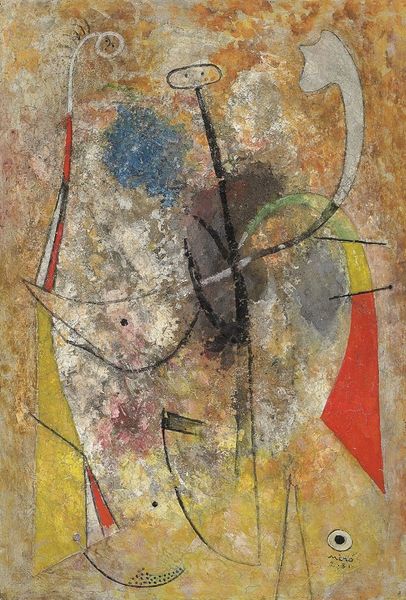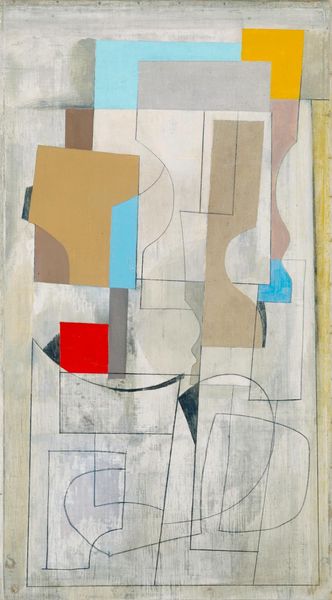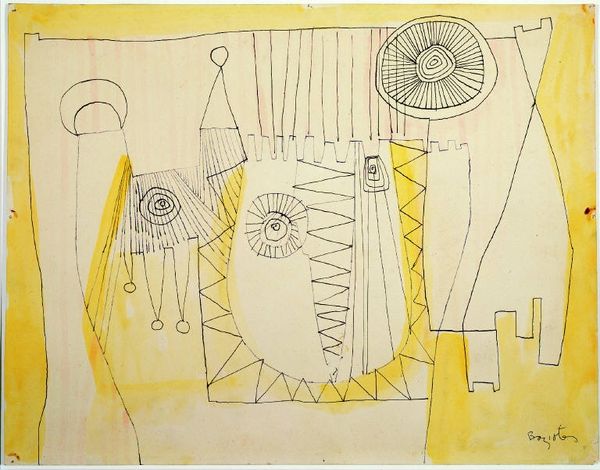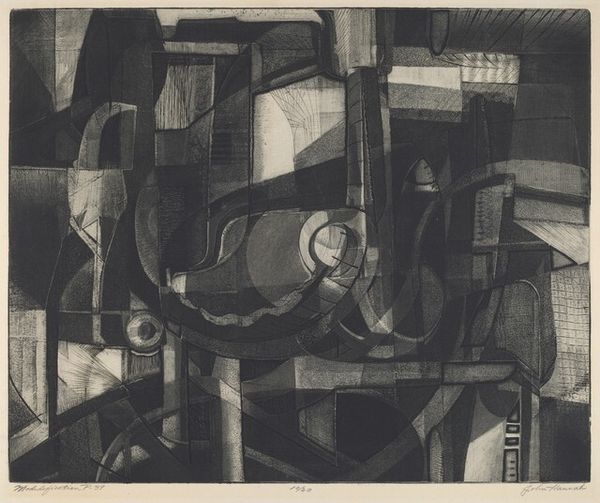
Copyright: Modern Artists: Artvee
Editor: This is "The Kitchen Paris," painted by Pablo Picasso in 1948. The medium looks like primarily monochrome paint on canvas. I'm immediately drawn to the linearity and how geometric shapes intertwine. What do you see in this piece from a formalist perspective? Curator: From a formal perspective, "The Kitchen Paris" is fascinating in its reduction of recognizable forms to a skeletal structure. Note the interplay of line and shape – circles, triangles, and quadrilaterals all rendered with an almost diagrammatic precision. The monochrome palette reinforces this emphasis on form, allowing the viewer to focus on the composition itself, without distraction from vibrant color. Editor: So it's less about what the objects are, and more about how they’re arranged? Curator: Precisely. Consider how Picasso uses line to create depth, or rather, the *illusion* of depth. Lines intersect, overlap, and suggest planes that recede into space, even though we know the canvas is a flat surface. The structure suggests an attempt to present all perspectives of an object, like a floor plan or an architectural elevation, rather than adhering to a single viewpoint. The effect subverts traditional perspectival drawing. Editor: It is as if he’s breaking down the elements of art to its bare bones. How does that choice affect how the viewer interacts with the artwork? Curator: By stripping away representational details, Picasso forces us to engage with the fundamental elements of art. We become conscious of the act of seeing, of how we perceive space, form, and relationship between shapes. It's not a passive viewing experience, but an active one of constructing meaning. He invites us to appreciate abstraction and the beauty within pure geometric design. Editor: That’s interesting. I initially saw the painting as a chaotic collection of lines, but thinking about it now I better appreciate the visual organization of these elementary parts. Curator: Indeed. By contemplating the intrinsic qualities of art - its line, structure, and form - we unlock an understanding of modern artistic theory.
Comments
No comments
Be the first to comment and join the conversation on the ultimate creative platform.
